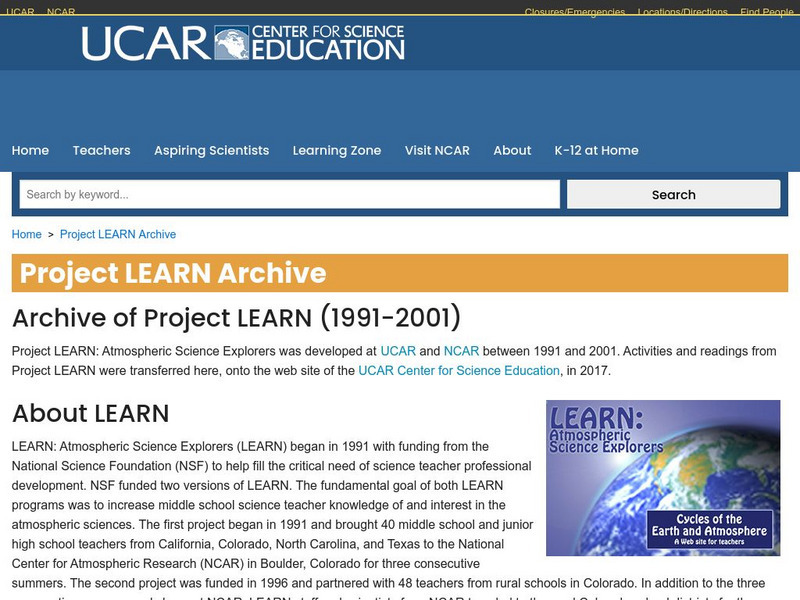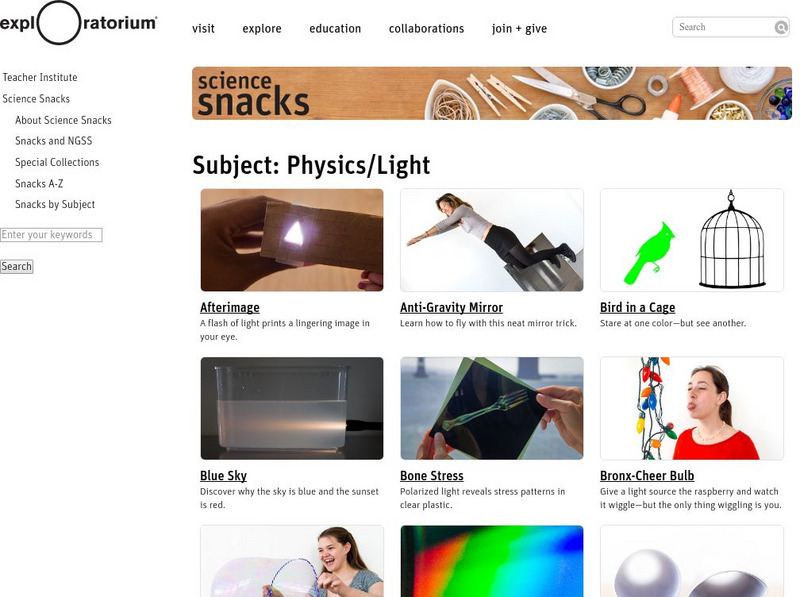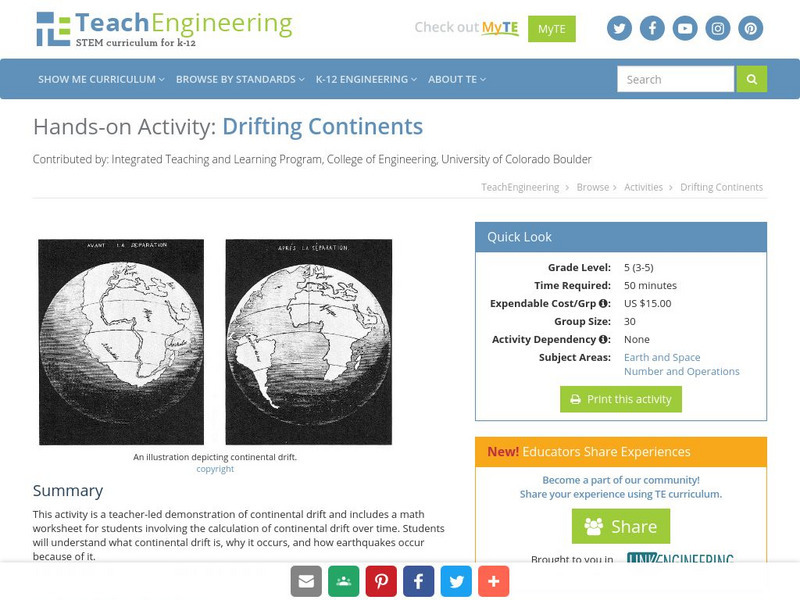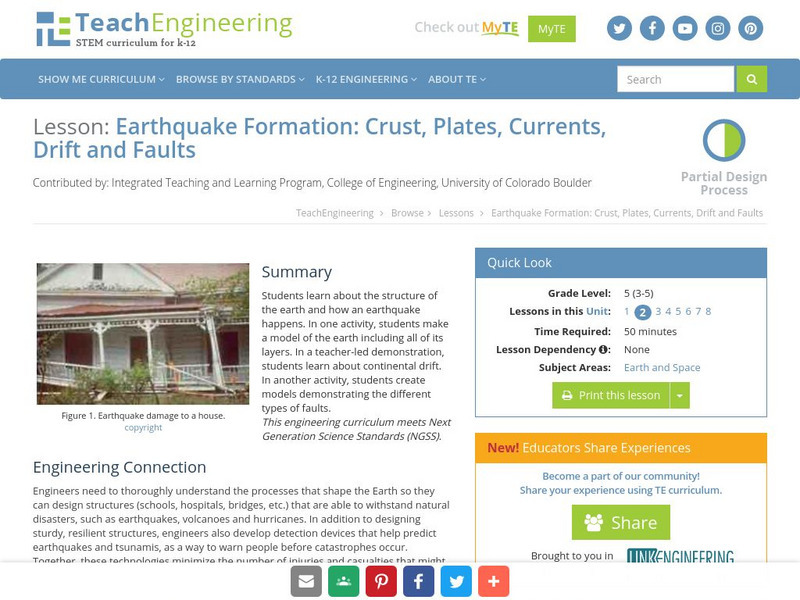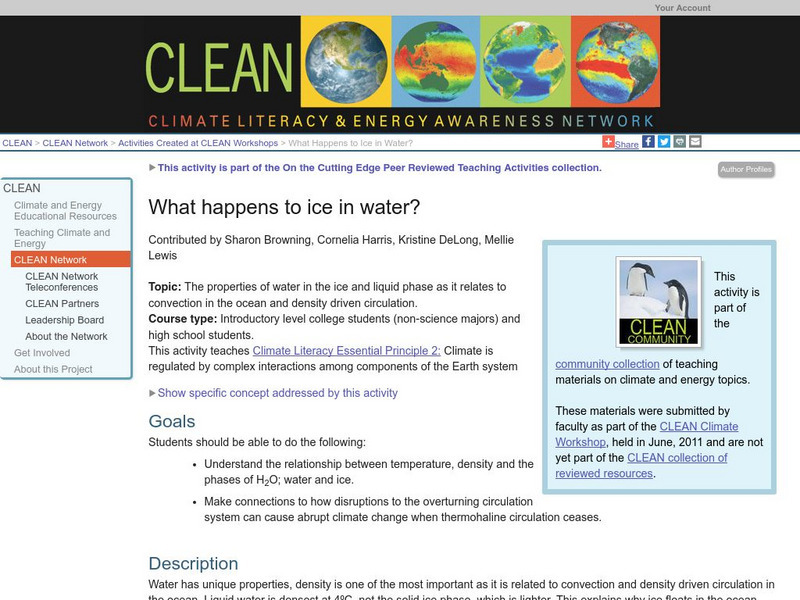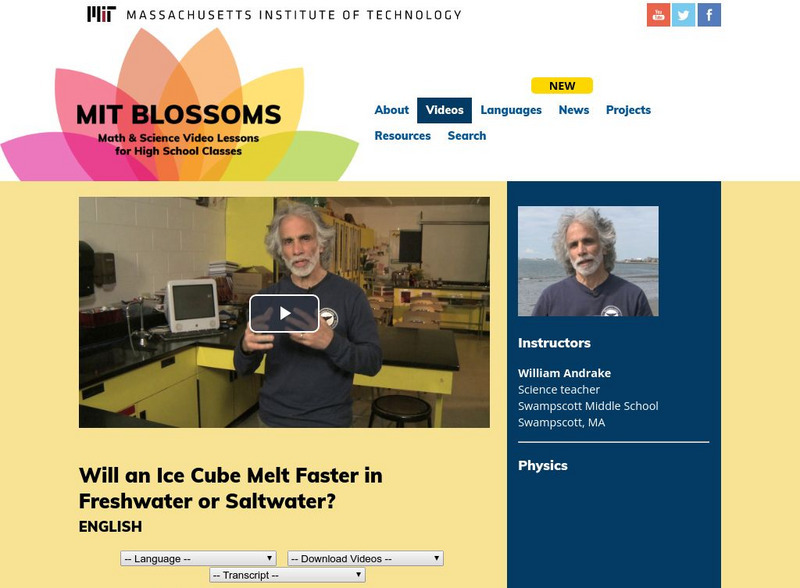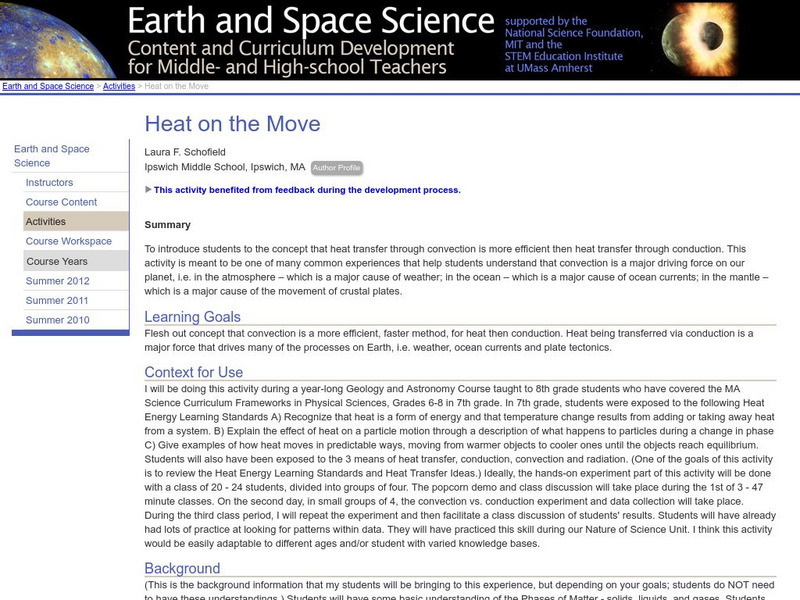Exploratorium
Exploratorium: Science Snacks: Convection Currents
Get a visual of convention currents with this activity. This activity allows students to observe the currents by bending light due to cold and warm water.
PBS
Pbs Kids: Colored Water Convection
This PBS site allows users to learn more about water convection as they discover how to demonstrate the way convection currents form. A fun science project!
University Corporation for Atmospheric Research
Ucar: Atmospheric Processes: Convection
This site provides a pair of activities to demonstrate convection currents in air and water. Encourages students to view air as a fluid.
Museum of Science
Museum of Science and Industry: Activities: Fly a Hot Air Balloon
Step-by-step instructions, with photos, of how to construct a hot-air balloon from tissue paper, to demonstrate that heated air expands, creating a convection current. This activity requires the use of a hot air gun and is labor-intensive.
Science Education Resource Center at Carleton College
Serc: Mn Step: What Makes Thunderstorms? See Convection
Using water, food coloring, and an ice cube, students observe the movement of convection currents in a container, and illustrate what they see happening. This activity develops their understanding of how thunderstorms form.
TeachEngineering
Teach Engineering: Turning the Air Upside Down
Students develop their understanding of air convection currents and temperature inversions by constructing and observing simple models.
TeachEngineering
Teach Engineering: Let's Get Breezy!
Students apply an understanding of the concept of heat transfer through convection, conduction, and radiation as they use wireless temperature probes to investigate the heating capacity of different materials under heat lamps.
Exploratorium
Exploratorium: Science Snacks: Physics/light
Here is a large collection of simple science class activities for understanding the physics of light.
TeachEngineering
Teach Engineering: Drifting Continents
This activity is a teacher-led demonstration of continental drift and includes a math worksheet for students involving the calculation of continental drift over time. Students will understand what continental drift is, why it occurs, and...
Science and Mathematics Initiative for Learning Enhancement (SMILE)
Smile: Plate Tectonics (Intermediate)
Many activities in this lesson plan to help students understand the Theory of Plate Tectonics. Plans can be used in intermediate or middle school levels.
TeachEngineering
Teach Engineering: Weather Watchers
Students are introduced to some essential meteorology concepts so they more fully understand the impact of meteorological activity on air pollution control and prevention. First, they develop an understanding of the magnitude and...
TeachEngineering
Teach Engineering: Earthquake Formation
Students learn about the structure of the earth and how an earthquake happens. In one activity, students make a model of the earth including all of its layers. In a teacher-led demonstration, students learn about continental drift. In...
Climate Literacy
Clean: What Happens to Ice in Water?
Students investigate the properties of water in the ice and liquid phase as it relates to convection in the ocean and density driven circulation, and ultimately the climate.
University Corporation for Atmospheric Research
Ucar: Introduction to the Atmosphere
A detailed overview of the Earth's atmosphere, with explanations about atmospheric properties, the structure of the atmosphere, its four layers, atmospheric processes, energy heat transfer, conduction and convection, and radiation. All...
Massachusetts Institute of Technology
Mit: Blossoms: Will an Ice Cube Melt Faster in Freshwater or Saltwater?
Engage young scholars in the study of the ocean and saltwater with these activities. Students will see that saltwater has different physical properties than freshwater - mainly density. This instructional activity can serve as a...
University Corporation for Atmospheric Research
Ucar: Bubbles on Bottles
Students observe that a change in the temperature of air can impact the size of a bubble placed on a bottle that is cooled and/or heated.
Science Education Resource Center at Carleton College
Serc: Heat on the Move
This activity is meant to be one of many common experiences that help learners understand that convection is a major driving force on our planet.
TeachEngineering
Teach Engineering: Solar Water: Heat It Up!
Students explore energy efficiency, focusing on renewable energy, by designing and building flat-plate solar water heaters. They apply their understanding of the three forms of heat transfer (conduction, convection and radiation), as...
TeachEngineering
Teach Engineering: Mobile Forces
The application of engineering principles is explored in the creation of mobiles. As students create their own mobiles, they take into consideration the forces of gravity and convection air currents. They learn how an understanding of...


